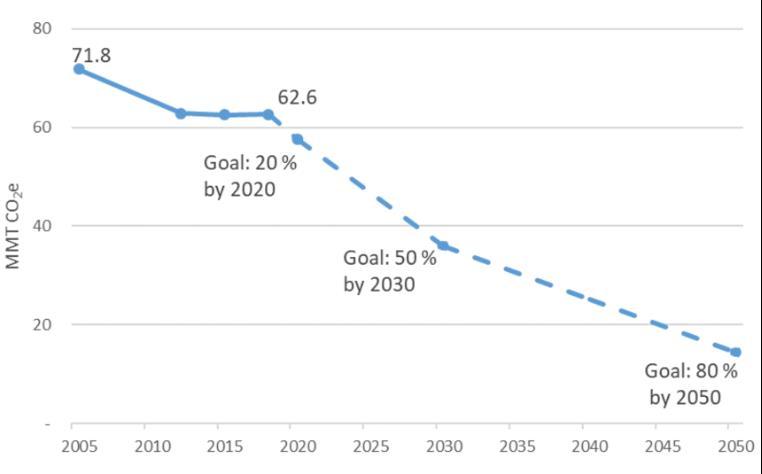Cutting Transportation Emissions by 2030 and Beyond WMATA’s ConnectGreaterWashington policy alternatives study showed that policies to concentrate the future growth in housing and jobs near our transit stations and address the east-west jobs-housing imbalance would have major benefits for the region. The land use
scenario could decrease VMT by 12 percent by 2040 compared to conditions under the region’s adopted transportation plan and anticipated future land use, and would provide additional benefits for job accessibility, Metrorail revenues, and roadway congestion relief. 26
Equity, Livability, and Economic Co-Benefits of Land Use, Mode Shift and Housing Strategies To meet our climate protection goals, our region must reduce the need to drive for basic needs. Automobile-dependent land use and transportation networks place significant burdens on low-income households and workers in accessing daily needs. If we make it easier to use transit, or bike, and walk to get to work, school, shopping and services, our climate strategy will not just reduce GHG emissions, it will also improve equity and livability in the region. Co-benefits from reducing the need to drive include the following:
Total Externalities of Auto Vehicle Miles Traveled (VMT) Every vehicle mile traveled in the United States costs society on net 18.38 cents per mile in 2017, accounting for congestion, crashes, and local air pollution as well as GHG emissions. 27
Equity Reducing Transportation Costs and Improving Affordability Auto-oriented land use prevents walkable, transit-accessible neighborhoods. With a shortage of affordable housing in urban areas, many low-to-moderate income households are pushed to more distant auto-oriented suburbs that entail high personal transportation costs. Building more housing in cities and near transit can help expand job access and lower household transportation costs for families. 28
What are “Co-Benefits”? Many strategies to mitigate climate change have other societal benefits, such as improved health from reducing air pollution. These are referred to as “co-benefits”. A transportation-sector climate strategy focused just on electric cars will have much fewer cobenefits than a holistic approach that also addresses the need to drive for everyday needs.
12








